Wait.. Hang On A Second

If one remembers this particular episode from the popular sitcom ‘Friends’ where Ross is trying to carry a sofa to his apartment, it seems that moving a sofa up the stairs is ridiculously hard.
But life shouldn’t be that hard now should it?
The mathematician Leo Moser posed in 1966 the following curious mathematical problem: what is the shape of largest area in the plane that can be moved around a right-angled corner in a two-dimensional hallway of width 1? This question became known as the moving sofa problem, and is still unsolved fifty years after it was first asked.
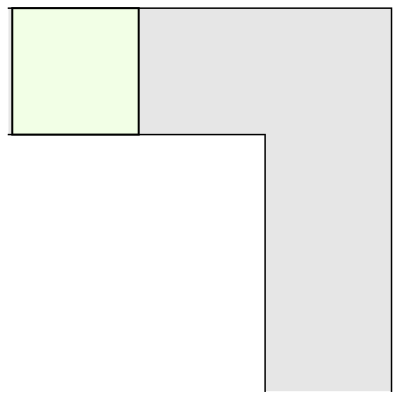
The most common shape to move around a tight right angled corner is a square.
And another common shape that would satisfy this criterion is a semi-circle.
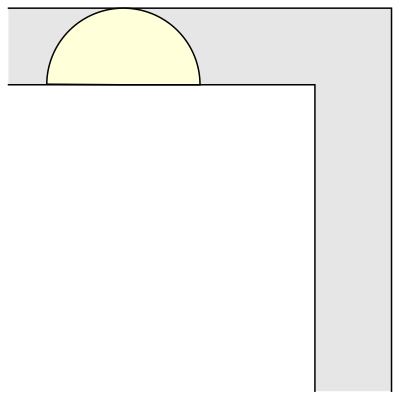
But what is the largest area that can be moved around?
Well, it has been conjectured that the shape with the largest area that one can move around a corner is known as “Gerver’s sofa”. And it looks like so:
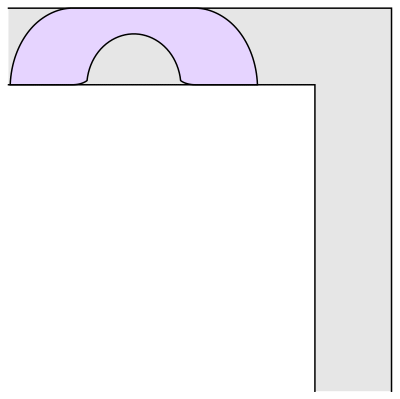
Wait.. Hang on a second
This sofa would only be effective for right handed turns. One can clearly see that if we have to turn left somewhere we would be kind of in a tough spot.
Prof.Romik from the University of California, Davis has proposed this shape popularly know as Romik’s ambidextrous sofa that solves this problem.
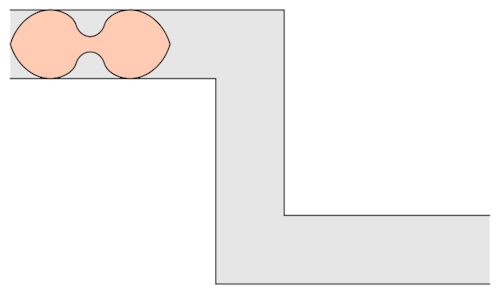
Although Prof.Romik’s sofa may/may not be the not the optimal solution, it is definitely is a breakthrough since this can pave the way for more complex ideas in mathematical analysis and more importantly sofa design.

Have a good one!
More Posts from Artldy and Others
I like old maps. How about you?

Wednesday? Map Day! A while back we shared the all the portions of this enormous 1867 map except for the southeast quadrant. So here you go!
We can only provide this massive beast in quarters because the digital map in its entirety is far too large to upload. That being said, you can find the whole thing right here.
Three Ways to Travel at (Nearly) the Speed of Light

One hundred years ago, Einstein’s theory of general relativity was supported by the results of a solar eclipse experiment. Even before that, Einstein had developed the theory of special relativity — a way of understanding how light travels through space.
Particles of light — photons — travel through a vacuum at a constant pace of more than 670 million miles per hour.

All across space, from black holes to our near-Earth environment, particles are being accelerated to incredible speeds — some even reaching 99.9% the speed of light! By studying these super fast particles, we can learn more about our galactic neighborhood.
Here are three ways particles can accelerate:
1) Electromagnetic Fields!
Electromagnetic fields are the same forces that keep magnets on your fridge! The two components — electric and magnetic fields — work together to whisk particles at super fast speeds throughout the universe. In the right conditions, electromagnetic fields can accelerate particles at near-light-speed.

We can harness electric fields to accelerate particles to similar speeds on Earth! Particle accelerators, like the Large Hadron Collider and Fermilab, use pulsed electromagnetic fields to smash together particles and produce collisions with immense amounts of energy. These experiments help scientists understand the Big Bang and how it shaped the universe!
2) Magnetic Explosions!

Magnetic fields are everywhere in space, encircling Earth and spanning the solar system. When these magnetic fields run into each other, they can become tangled. When the tension between the crossed lines becomes too great, the lines explosively snap and realign in a process known as magnetic reconnection. Scientists suspect this is one way that particles — for example, the solar wind, which is the constant stream of charged particles from the Sun — are sped up to super fast speeds.

When magnetic reconnection occurs on the side of Earth facing away from the Sun, the particles can be hurled into Earth’s upper atmosphere where they spark the auroras.
3) Wave-Particle Interactions!

Particles can be accelerated by interactions with electromagnetic waves, called wave-particle interactions. When electromagnetic waves collide, their fields can become compressed. Charged particles bounce back and forth between the waves, like a ball bouncing between two merging walls. These types of interactions are constantly occurring in near-Earth space and are responsible for damaging electronics on spacecraft and satellites in space.

Wave-particle interactions might also be responsible for accelerating some cosmic rays from outside our solar system. After a supernova explosion, a hot, dense shell of compressed gas called a blast wave is ejected away from the stellar core. Wave-particle interactions in these bubbles can launch high-energy cosmic rays at 99.6% the speed of light.
Make sure to follow us on Tumblr for your regular dose of space: http://nasa.tumblr.com.
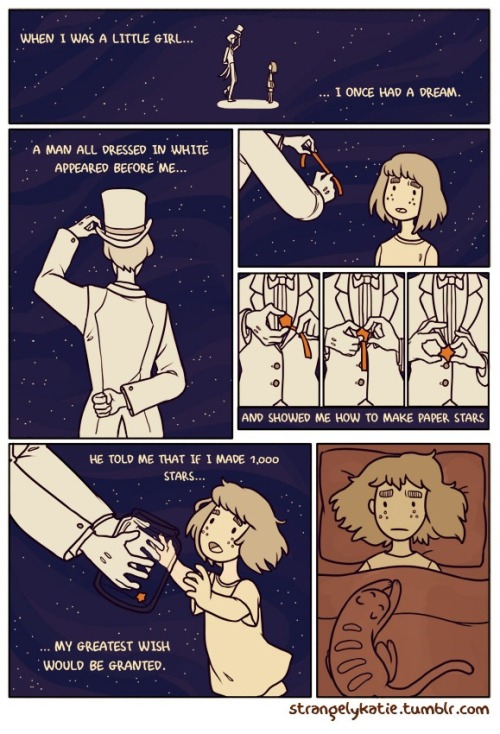
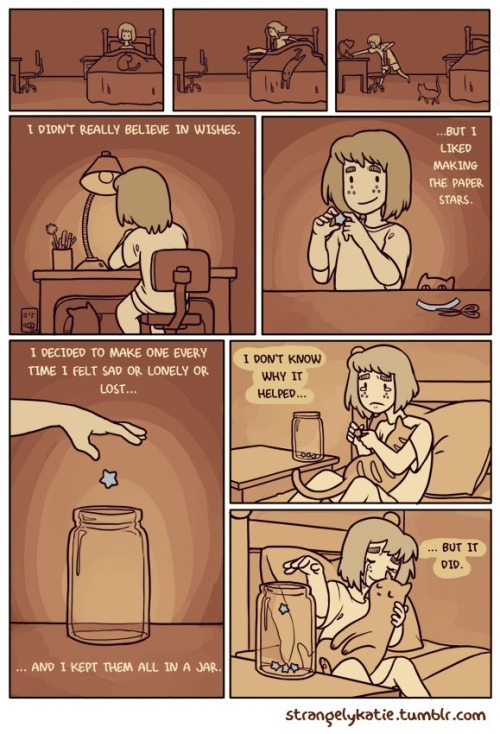
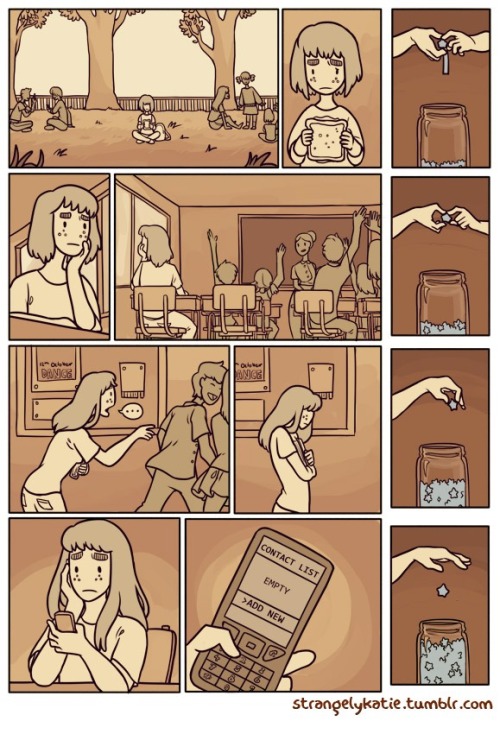
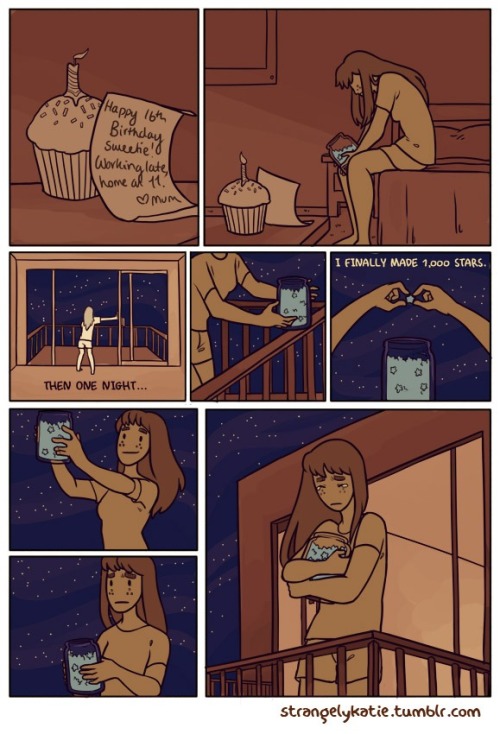
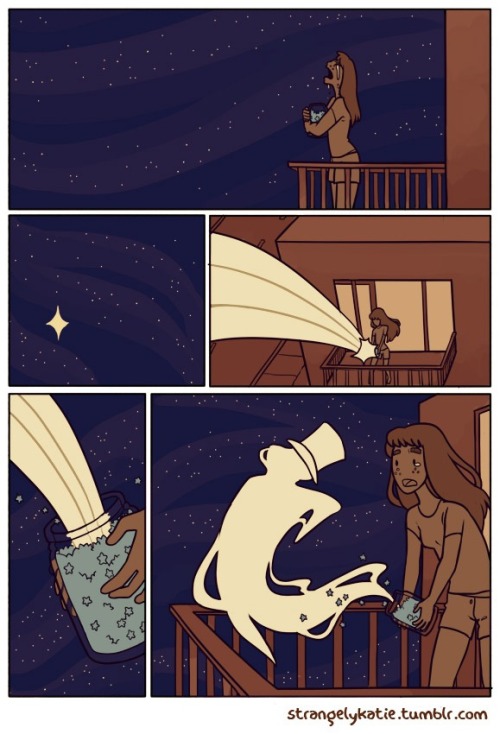
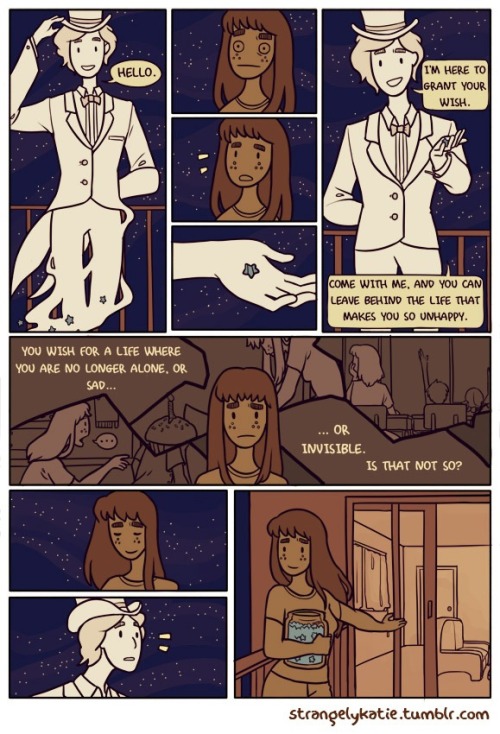

… Was a friend

If this 1908 photograph reminds you of a certain Dutch painter…you’re right! Photographer Guido Rey was inspired by Vermeer’s 1600s compositions.
NASA cool.
6 Ways NASA Technology Makes You Healthier
An important part of our mission is keeping astronauts strong and healthy during stays in space, but did you know that our technology also helps keep you healthy? And the origins of these space innovations aren’t always what you’d expect.
As we release the latest edition of NASA Spinoff, our yearly publication that celebrates all the ways NASA technology benefits us here on Earth, let’s look at some ways NASA is improving wellness for astronauts—and everyone else.
1. Weightless weight-lifting

Without gravity to work against, astronauts lose bone and muscle mass in space. To fight it, they work out regularly. But to get them a good burn, we had to get creative. After all, pumping iron doesn’t do much good when the weights float.
The solution? Elastic resistance. Inventor Paul Francis was already working on a portable home gym that relied on spiral-shaped springs made of an elastic material. He thought the same idea would work on the space station and after additional development and extensive testing, we agreed.
Our Interim Resistive Exercise Device launched in 2000 to help keep astronauts fit. And Francis’ original plan took off too. The technology perfected for NASA is at the heart of the Bowflex Revolution as well as a new line of handheld devices called OYO DoubleFlex, both of which enable an intensive—and extensive—workout, right at home.
2. Polymer coating keeps hearts beating

A key ingredient in a lifesaving treatment for many patients with congestive heart failure is made from a material a NASA researcher stumbled upon while working on a supersonic jet in the 1990s.
Today, a special kind of pacemaker that helps synchronize the left and right sides of the heart utilizes the unique substance known as LaRC-SI. The strong material can be cast extremely thin, which makes it easier to insert in the tightly twisted veins of the heart, and because it insulates so well, the pacemaker’s electric pulses go exactly where they should.
Since it was approved by the FDA in 2009, the device has been implanted hundreds of thousands of times.
3. Sutures strong enough for interplanetary transport

Many people mistakenly think we created Teflon. Not true: DuPont invented the unique polymer in 1938. But an innovative new way to use the material was developed to help us transport samples back from Mars and now aids in stitching up surgery patients.
Our scientists would love to get pristine Martian samples into our labs for more advanced testing. One complicating factor? The red dust makes it hard to get a clean seal on the sample container. That means the sample could get contaminated on its way back to Earth.
The team building the cannister had an idea, but they needed a material with very specific properties to make it work. They decided to use Polytetrafluoroethylene (that’s the scientific name for Teflon), which works really well in space.
The material we commonly recognize as Teflon starts as a powder, and to transform it into a nonstick coating, the powder gets processed a certain way. But process it differently, and you can get all kinds of different results.
For our Mars sample return cannister prototype, the powder was compressed at high pressures into a block, which was then forced through an extruder. (Imagine pressing playdough through a mold). It had never been done before, but the end result was durable, flexible and extremely thin: exactly what we needed.
And since the material can be implanted safely in the human body—it was also perfect as super strong sutures for after surgery.
4. Plant pots that clean the air

It may surprise you, but the most polluted air you breathe is likely the air inside your home and office. That’s especially true these days with energy-efficient insulation: the hot air gets sealed in, but so do any toxins coming off the paint, furniture, cooking gas, etc.
This was a problem NASA began worrying about decades ago, when we started planning for long duration space missions. After all, there’s no environment more insulated than a spaceship flying through the vacuum of space.
On Earth, plants are a big part of the “life support” system cleaning our air, so we wondered if they could do the same indoors or in space.
The results from extensive research surprised us: we learned the most important air scrubbing happens not through a plant’s leaves, but around its roots. And now you can get the cleanest air out of your houseplants by using a special plant pot, available online, developed with that finding in mind: it maximizes air flow through the soil, multiplying the plant’s ability to clean your air.
5. Gas sensor detects pollution from overhead

Although this next innovation wasn’t created with pollution in mind, it’s now helping keep an eye on one of the biggest greenhouse gasses: methane.
We created this tiny methane “sniffer” to help us look for signs of life on Mars. On Earth, the biggest source of methane is actually bacteria, so when one of our telescopes on the ground caught a glimpse of the gas on Mars, we knew we needed to take a closer look.
We sent this new, extremely sensitive sensor on the Curiosity Rover, but we knew it could also be put to good use here on our home planet. We adapted it, and today it gets mounted on drones and cars to quickly and accurately detect gas leaks and methane emissions from pipelines, oil wells and more.
The sensor can also be used to better study emissions from swamps and other natural sources, to better understand and perhaps mitigate their effects on climate change.
6. DNA “paint” highlights cellular damage

There’s been a lot of news lately about DNA editing: can genes be changed safely to make people healthier? Should they be?
As scientists and ethicists tackle these big questions, they need to be sure they know exactly what’s changing in the genome when they use the editing tools that already exist.
Well, thanks to a tool NASA helped create, we can actually highlight any abnormalities in the genetic code with special fluorescent “paint.”
But that’s not all the “paint” can do. We actually created it to better understand any genetic damage our astronauts incurred during their time in space, where radiation levels are far higher than on Earth. Down here, it could help do the same. For example, it can help doctors select the right cancer treatment by identifying the exact mutation in cancer cells.
You can learn more about all these innovations, and dozens more, in the 2019 edition of NASA Spinoff. Read it online or request a limited quantity print copy and we’ll mail it to you!
It’s interesting how things are made.
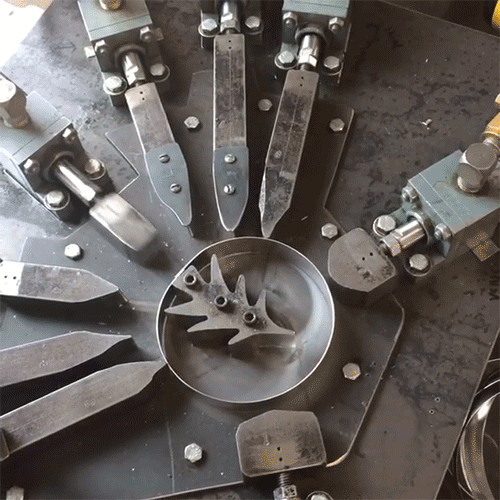

Watch How Steel Ribbons Are Shaped into Cookie Cutters

Kitty watching over Mishima’s work.
ZumiWaamoon - yes?
‘am i Having A Brain Problem or Being a Shithead’: a short procrastination checklist
aka why tf am i procrastinating on The Thing (more like a flowchart, actually)
lots of people who have executive function difficulties worry about whether they’re procrastinating on a task out of laziness/simply wanting to be a jerk or mental struggles. this checklist might help you figure out which it is at any given time! (hint: it’s almost never laziness or being a jerk.) (obligatory disclaimer: this is just what works for me! something different might work better for you.)
1) do I honestly intend to start the task despite my lack of success?
yes: it’s a Brain Problem. next question
no: it’s shitty to say one thing & do another. better be honest with myself & anyone expecting me to do the task.
2) am I fed, watered, well-rested, medicated properly, etc?
yes: next question
no: guess what? this is the real next task
3) does the idea of starting the task make me feel scared or anxious?
yes: Anxiety Brain. identify what’s scaring me first.
no: next question
4) do I know how to start the task?
yes: next question
no: ADHD Brain. time to make an order of operations list.
5) do I have everything I need to start the task?
yes: next question
no: ADHD Brain lying to me about the steps again, dangit. first task is ‘gather the materials’.
6) why am i having a hard time switching from my current task to this new task?
i’m having fun doing what i’m doing: it’s okay to have fun doing a thing! if task is time-sensitive, go to next question.
i have to finish doing what i’m doing: might be ADHD brain. can I actually finish the current task or will I get trapped in a cycle? does this task really need to be finished?
the next task will be boring/boring-er than the current task: ADHD brain. re-think the next task. what would make it exciting? what am I looking forward to?
I might not have enough time to complete the task: ADHD brain wants to finish everything it starts. (if task is time-sensitive, go to next question)
i just want to make the person who asked me to do it angry: sounds like anxiety brain trying to punish itself, because I know I’ll be miserable if someone is angry at me. why do i think I deserve punishment?
no, I seriously want to piss them off: okay, i’m being a shithead
7) have I already procrastinated so badly that I now cannot finish the task in time?
yes: ADHD brain is probably caught in a guilt-perfection cycle. since I can’t have the task done on time, i don’t even want to start.
reality check: having part of a thing done is almost always better than none of a thing done. if I can get an extension, having part of it done will help me keep from stalling out until the extension deadline. i’ll feel better if I at least try to finish it.
no, there’s still a chance to finish on time: ADHD brain thinks that I have all the time in the world, but the truth is I don’t.
reality check: if i’m having fun doing what I’m doing, I can keep doing it, but I should probably set a timer & ask someone to check on me to make sure I start doing the task later today.
8) I’ve completed the checklist and still don’t know what’s wrong!
probably wasn’t honest enough with myself. take one more look.
if I’m still mystified, ask a friend to help me talk it out.
hope this helps some of you! YOU’RE DOING GREAT SWEETIE DON’T GIVE UP ON YOU
Good advice I think
“Do you want to talk about it or be distracted from it” is honestly the best thing you can say to me when I say im sad/in pain etc.
-
 anbarbam liked this · 6 months ago
anbarbam liked this · 6 months ago -
 againstadarkbackground liked this · 8 months ago
againstadarkbackground liked this · 8 months ago -
 drumpenguin reblogged this · 8 months ago
drumpenguin reblogged this · 8 months ago -
 bobertflaming reblogged this · 8 months ago
bobertflaming reblogged this · 8 months ago -
 small-cog reblogged this · 1 year ago
small-cog reblogged this · 1 year ago -
 tomicaleto reblogged this · 1 year ago
tomicaleto reblogged this · 1 year ago -
 thisisnotjuli reblogged this · 1 year ago
thisisnotjuli reblogged this · 1 year ago -
 itsawritblr liked this · 1 year ago
itsawritblr liked this · 1 year ago -
 thousand-years-dreaming reblogged this · 1 year ago
thousand-years-dreaming reblogged this · 1 year ago -
 itpiercesskin liked this · 1 year ago
itpiercesskin liked this · 1 year ago -
 thebottomleftcorner reblogged this · 1 year ago
thebottomleftcorner reblogged this · 1 year ago -
 eternalcyclicality reblogged this · 1 year ago
eternalcyclicality reblogged this · 1 year ago -
 lowgardn liked this · 1 year ago
lowgardn liked this · 1 year ago -
 djlunchbox reblogged this · 1 year ago
djlunchbox reblogged this · 1 year ago -
 djlunchbox liked this · 1 year ago
djlunchbox liked this · 1 year ago -
 tolsunflowerboi reblogged this · 1 year ago
tolsunflowerboi reblogged this · 1 year ago -
 tolsunflowerboi liked this · 1 year ago
tolsunflowerboi liked this · 1 year ago -
 hazelgardener liked this · 1 year ago
hazelgardener liked this · 1 year ago -
 nspcritterstuck reblogged this · 1 year ago
nspcritterstuck reblogged this · 1 year ago -
 nspcritterstuck liked this · 1 year ago
nspcritterstuck liked this · 1 year ago -
 208tinyhorses reblogged this · 1 year ago
208tinyhorses reblogged this · 1 year ago -
 lea-winterregen liked this · 1 year ago
lea-winterregen liked this · 1 year ago -
 chrisisjustalie reblogged this · 1 year ago
chrisisjustalie reblogged this · 1 year ago -
 buckyandsteeb liked this · 1 year ago
buckyandsteeb liked this · 1 year ago -
 swhitegirlproblems reblogged this · 1 year ago
swhitegirlproblems reblogged this · 1 year ago -
 robin-sends-it liked this · 1 year ago
robin-sends-it liked this · 1 year ago -
 deltadizzy reblogged this · 1 year ago
deltadizzy reblogged this · 1 year ago -
 deltadizzy liked this · 1 year ago
deltadizzy liked this · 1 year ago -
 beveverage reblogged this · 1 year ago
beveverage reblogged this · 1 year ago -
 beveverage liked this · 1 year ago
beveverage liked this · 1 year ago -
 rebloggingcomet reblogged this · 1 year ago
rebloggingcomet reblogged this · 1 year ago -
 thefallencomet liked this · 1 year ago
thefallencomet liked this · 1 year ago -
 game-shy liked this · 1 year ago
game-shy liked this · 1 year ago -
 peachpunc liked this · 1 year ago
peachpunc liked this · 1 year ago -
 cock-lore liked this · 1 year ago
cock-lore liked this · 1 year ago -
 the-shadow-83 reblogged this · 1 year ago
the-shadow-83 reblogged this · 1 year ago -
 histories-and-mystery reblogged this · 1 year ago
histories-and-mystery reblogged this · 1 year ago -
 incurablebookwyrm liked this · 1 year ago
incurablebookwyrm liked this · 1 year ago -
 inlovewithanathemadevice liked this · 1 year ago
inlovewithanathemadevice liked this · 1 year ago -
 uss-genderprise liked this · 1 year ago
uss-genderprise liked this · 1 year ago -
 lesbianminou reblogged this · 1 year ago
lesbianminou reblogged this · 1 year ago -
 captainbookwyrm reblogged this · 1 year ago
captainbookwyrm reblogged this · 1 year ago -
 rubixpsyche liked this · 1 year ago
rubixpsyche liked this · 1 year ago -
 foryouthegays reblogged this · 1 year ago
foryouthegays reblogged this · 1 year ago -
 kandyroro liked this · 1 year ago
kandyroro liked this · 1 year ago -
 somewhatcompetent reblogged this · 1 year ago
somewhatcompetent reblogged this · 1 year ago -
 freerealestateforjim reblogged this · 1 year ago
freerealestateforjim reblogged this · 1 year ago -
 freerealestateforjim liked this · 1 year ago
freerealestateforjim liked this · 1 year ago